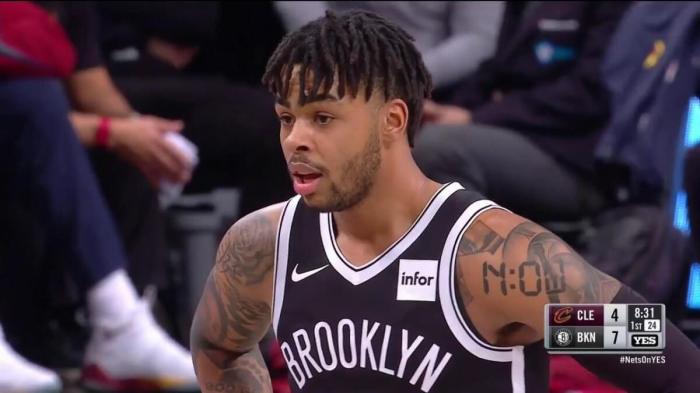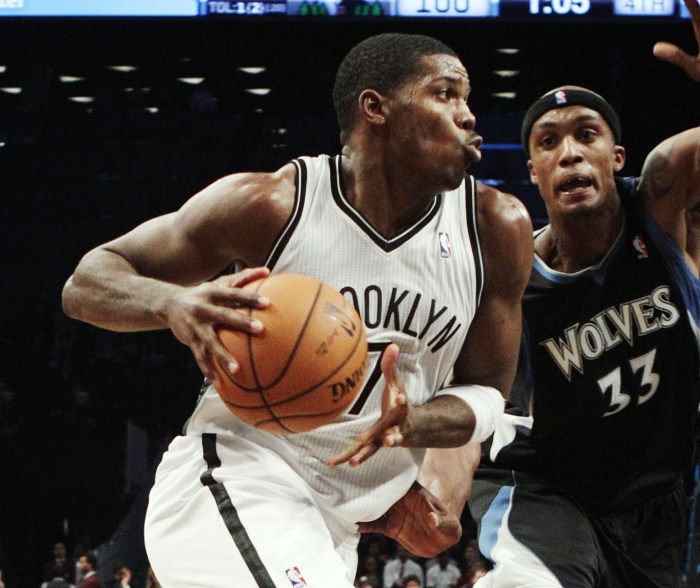
Team Name: Detroit Pistons
Last Year’s Record: 39-43 (3rd place, Central Division)
Head Coach: John Kuester
Comings: Ben Gordon, Charlie Villanueva, Austin Daye (no. 15), Jonas Jerebko (no. 39), DaJuan Summers (no. 35), Chris Wilcox and Ben Wallace.
Goings: Allen Iverson, Rasheed Wallace, Antonio McDyess, Amir Johnson, Arron Afflalo and Walter Sharpe.
Blogger Thoughts, Dan Feldman of Pistons Powered:
I have the Pistons winning 44 games and finishing fifth in the East. They made a lot of additions by subtraction in the offseason (Allen Iverson, Rasheed Wallace and Coach Michaely Curry) and some addition by addition, too (Ben Gordon, Charlie Villanueva and maybe even Ben Wallace, Austin Daye or Coach John Kuester). Last year was a miserable season, and Detroit still made the playoffs. This team is improved.
On the Nets:
I project the Nets to win 30 games and finish last in the East. They have a bunch of players who could be starters on good a good team down the road. But those guys aren’t ready yet. And none looks like they can be the focal point of a team at any point, let alone now.
Comparing the Starters:
Starting PG – Rodney Stuckey (13.4 ppg, 4.9 apg, 14.83 PER) vs. Devin Harris (21.3 ppg, 6.9 apg, 21.65 PER): A larger point guard at 6’5”, Stuckey is questionable at the position placing 47th in pure point rating. He’s not the best outside shooter as a point guard either, with a True Shooting percentage of 50.8 percent. And though he took inside shots about 42 percent of the time, he wasn’t a strong finisher, sporting an effective field goal percentage on inside shots of .497 percent. His defense doesn’t rate all that high either. Opposing PGs had a PER of 18.2 when he was on the floor, and the team defensively allowed more points when he was on the floor compared to when he was on the bench.
Advantage: Nets. Devin Harris is a better scorer, passer and finisher than Stuckey. He’s also a better defender when he needs to be.
Starting SG – Richard Hamilton (18.3 ppg, 4.4 apg, 16.93 PER) vs. Courtney Lee (8.4 ppg, 1.2 apg, 10.78 PER): Keep in mind this spot could also go to the newly acquired Ben Gordon (20.7 ppg, 3.4 apg, 17.02 PER). Hamilton appears to be in the decline phase of his career. His PER and True Shooting percentage have both decreased year-over-years since 2005-06. With Ben Gordon in the flock, expect Hamilton’s minutes to decline, and thus his overall averages. He’s still one of the more agile shooting guards in the game, who can literally run an opponent ragged as he sprints all over the court in and around screens to try and free himself up for an open jumper.
Advantage: Pistons. Both Hamilton and Gordon have proven to be very good scorers in this league. While Lee is considered an above average defender, it’s hard to give him the overall edge to either of these two.
Starting SF – Tayshaun Prince (14.2 ppg, 5.8 rpg, 15.09 PER) vs. Jarvis Hayes (8.7 ppg, 3.6 rpg, 10.85 PER): Prince has been fairly consistent on the offensive end for a while now. Last year, for his fifth season in a row, he averaged around 14 points a game. His True Shooting percentage has hovered between 52 and 53 percent during that time and his assist and rebound percentages have also not declined or increased in any significant way year-over-year. Defensively, he’s still one of the better small forwards out there. Opposing SFs had a PER of 14.2 when he was on the floor and opposing PFs had a PER of 12.6.
Advantage: Pistons. Prince is never going to lead the league in scoring, but he’s a solid player at his position. He battled back problems most of last season, but he still suited up every game, and if he’s completely healthy this season, there is no reason to expect any kind of drop-off in his play.
Starting PF – Charlie Villanueva (16.2 ppg, 6.7 rpg, 18.64 PER) vs. Yi Jianlian (8.6 ppg, 5.3 rpg, 10.98 PER): Villanueva had a breakout season last year, getting career highs in points per game, rebounds, three-point shooting percentage and PER. He was the focal point of Milwaukee’s offense, with a usage rate that was second among power forwards and 15th overall in the league. There are questions about how the shoot-first forward will work into Detroit’s guard-centric offense, but Villanueva is still one of the better young PFs in the game today.
Advantage: Pistons. I think at this point, you can hope and pray that maybe someday Yi could evolve into a PF that puts up Villanueva’s numbers. Both rely more on their jumpers than inside shots and both are known as defensively indifferent and soft (Yi more so).
Starting C – Kwame Brown (4.2 ppg, 5.0 rpg, 11.26 PER) vs. Brook Lopez (13.0 ppg, 8.1 rpg, 17.94 PER): Seven years later and team’s are still trying to make Brown into a starting center in this league. He can’t score, he’s an awful free throw shooter, and for a guy who takes a majority of his shots inside, he has a mediocre field goal percentage. He’s foul-prone on the defensive end.
Advantage: Nets. I know Nets fans may overstate Brook Lopez’s potential sometimes, but is there any doubt that he’s better than Kwame Brown?
Bench: Figuring Ben Gordon comes off the bench, that’s one player right there who’s better than any sixth man the Nets feature. Will Bynum is another good scorer and actually lead the Pistons in PER last season. Austin Daye is a good shorter for a wing, but there are questions about his thin-frame and strength. Chris Wilcox is an above average back-up at the four. Jason Maxiell is probably a better center than Brown, but seems lost in the shuffle in Detroit. Ben Wallace brings nostalgia and good rebounding and defense.
Advantage: Pistons. Gordon and Bynum alone make this a pretty solid bench. Guys like Wilcox and Maxiell are good frontcourt depth and Austin Daye could be a good shooter. And Big Ben is what he is.

















